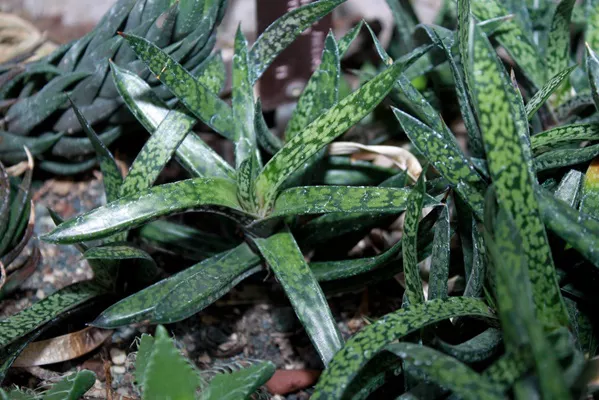Succulents are popular plants because they are easy to care for and come in many shapes and sizes. Most people think that succulents need a lot of sunlight to grow. While this is true for many types, some succulents thrive in shady areas. These shade-loving succulents are perfect for indoor spaces, gardens with limited sunlight, and patios with partial shade. This essay will explore different succulents that grow well in shade and provide tips on how to care for them.
Why Some Succulents Grow Well in Shade
Not all succulents require bright, direct sunlight. Some species naturally grow under trees, on forest floors, or in rocky crevices where sunlight is limited. These succulents have adapted to lower light conditions by developing larger leaves, deeper green colors, and slower growth rates. Shade-loving succulents can still photosynthesize efficiently, but they do not require intense sunlight to survive.
Best Succulents for Shady Areas
There are several types of succulents that thrive in shade or low-light conditions. Below are some of the best options.
Haworthia
Haworthia is a small, attractive succulent that does well in shade. It has thick, pointed leaves with white stripes or translucent patterns. Haworthia grows well in indirect light, making it perfect for indoor spaces and offices. Too much direct sunlight can scorch its leaves, so placing it in a shaded area is ideal.
Gasteria
Gasteria is another shade-loving succulent that belongs to the same family as Aloe and Haworthia. Its thick, tongue-shaped leaves often have textured or spotted patterns. Gasteria prefers low to moderate light and grows well indoors or in shaded outdoor gardens. It is a slow-growing plant that requires minimal care.
Sansevieria (Snake Plant)
Sansevieria, also known as the Snake Plant or Mother-in-Law’s Tongue, is one of the most adaptable succulents. It can survive in both bright and low-light conditions. This plant is popular for its tall, upright leaves and air-purifying qualities. While it can tolerate low light, it still benefits from occasional exposure to indirect sunlight.
Jade Plant (Crassula ovata)
The Jade Plant is a well-known succulent that can tolerate partial shade. While it prefers bright, indirect light, it can adapt to lower light levels. Its thick, round leaves store water, allowing it to survive in less-than-ideal conditions. Jade plants are excellent for indoor settings where sunlight is limited.
Aloe Vera
Aloe Vera is a well-known medicinal plant that can tolerate partial shade. While it thrives in bright light, it can also survive in low-light conditions. However, in deep shade, it may grow slower and develop elongated leaves. If kept indoors, placing it near a window with filtered light is best.
Rhipsalis (Mistletoe Cactus)
Rhipsalis is a unique, trailing succulent that thrives in shaded environments. Native to rainforests, it grows on tree trunks and absorbs moisture from the air. This succulent does well in low to moderate light and is perfect for hanging baskets indoors.
Schlumbergera (Christmas Cactus)
The Christmas Cactus is a popular succulent that blooms beautifully in winter. Unlike desert cacti, it naturally grows in shaded forest environments. It prefers indirect light and does well indoors. Too much direct sunlight can cause its leaves to turn red or become scorched.
Kalanchoe
Kalanchoe is another shade-tolerant succulent that comes in many varieties. Some species, like Kalanchoe blossfeldiana, produce vibrant flowers. While Kalanchoe enjoys bright light, it can tolerate partial shade and still bloom with proper care.
Sedum morganianum (Burro’s Tail)
Burro’s Tail is a trailing succulent with plump, teardrop-shaped leaves. It prefers bright, indirect light but can tolerate some shade. This plant is best grown in hanging baskets where its long stems can cascade gracefully.
Peperomia
Peperomia is a small, shade-loving succulent with thick, fleshy leaves. Some varieties have textured or variegated leaves, adding beauty to any space. Peperomia prefers indirect light and thrives in humid conditions, making it an excellent choice for indoor gardens.
How to Care for Shade-Loving Succulents
Even though these succulents can grow in shade, they still require proper care to thrive. Below are some essential care tips:
Provide Indirect Light
While these succulents can survive in the shade, they still need some light to grow. Place them near windows, under grow lights, or in areas with bright, indirect sunlight. Avoid deep, dark corners with no natural light.
Avoid Overwatering
Succulents store water in their leaves, so they do not need frequent watering. In shaded conditions, the soil dries out more slowly. Water only when the soil is completely dry to prevent root rot.
Use Well-Draining Soil
A well-draining soil mix is essential for succulents. Use a mixture of potting soil, sand, and perlite to ensure excess water drains away quickly.
Provide Proper Ventilation
Good airflow helps prevent fungal infections and keeps succulents healthy. Avoid placing them in areas with stagnant air, such as closed cabinets or sealed containers.
Rotate the Plant Occasionally
To ensure even growth, rotate your succulent every few weeks. This helps all sides of the plant receive equal light exposure and prevents one side from stretching toward the light source.
Fertilize Sparingly
Shade-loving succulents do not need frequent fertilization. A diluted, balanced fertilizer applied once every few months during the growing season is sufficient.
Protect from Cold Temperatures
Some succulents are sensitive to cold temperatures. If you live in a region with harsh winters, keep your succulents indoors or provide protection with a greenhouse or frost cloth.
Conclusion
Succulents are often associated with bright, sunny conditions, but many varieties can thrive in shade. Haworthia, Gasteria, Snake Plant, and Christmas Cactus are just a few examples of shade-loving succulents. These plants are excellent choices for indoor spaces, patios, and gardens with limited sunlight. By providing indirect light, using well-draining soil, and avoiding overwatering, you can successfully grow beautiful succulents in shaded areas. Whether you are a beginner or an experienced gardener, shade-tolerant succulents offer a great way to enjoy greenery in any environment.
Related Topics:


